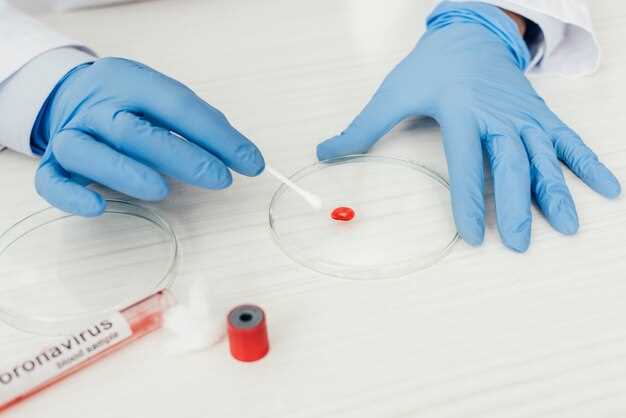
Discover the groundbreaking interaction between finasteride and tamsulosin, the dynamic duo that can transform your hair health. With finasteride’s proven ability to stimulate hair growth and tamsulosin’s unique mechanism to enhance follicle function, this powerful combination is your key to thicker, fuller hair.
Benefits of Interaction
When finasteride and tamsulosin interact, they can provide several benefits for prostate health and hair growth. Here are some key advantages of this interaction:
1. Prostate Health Improvement
Finasteride works to reduce the size of the prostate gland, relieving symptoms of benign prostatic hyperplasia (BPH) such as frequent urination and difficulty in urinating. Tamsulosin, on the other hand, helps to relax the muscles in the prostate and bladder neck, making it easier to urinate. When used together, these medications can effectively manage BPH symptoms and improve overall prostate health.
2. Hair Growth Enhancement
Finasteride is also known for its ability to promote hair growth by blocking the conversion of testosterone to dihydrotestosterone (DHT), a hormone that contributes to hair loss. By combining finasteride with tamsulosin, individuals taking both medications may experience the additional benefit of improved hair growth, resulting in thicker and fuller hair.
In conclusion, the interaction between finasteride and tamsulosin can offer significant benefits for individuals dealing with prostate health issues and hair loss. Consult with your healthcare provider to learn more about how these medications can work together to improve your health and well-being.
Improving Prostate Health
Prostate health is an essential aspect of men’s overall well-being. One way to enhance prostate health is through the use of finasteride and tamsulosin. These medications work together to improve urinary symptoms related to enlarged prostate glands. In addition to managing symptoms, they also contribute to reducing the size of the prostate gland and promoting better urinary flow.
The Benefits of Using Finasteride and Tamsulosin for Prostate Health
By combining finasteride and tamsulosin, individuals can experience a more significant improvement in prostate health compared to using each medication separately. Finasteride helps reduce the size of the prostate gland, while tamsulosin relaxes the muscles in the prostate and bladder neck, thereby improving urine flow and reducing symptoms such as frequent urination, weak stream, and urgency.
Improving prostate health is crucial for overall quality of life and well-being. By using finasteride and tamsulosin in combination, individuals can effectively manage prostate enlargement symptoms and promote better urinary function.
Enhancing Hair Growth
One of the key benefits of the interaction between finasteride and tamsulosin is the potential enhancement of hair growth. Finasteride, a medication typically used to treat hair loss in men, works by inhibiting the production of dihydrotestosterone (DHT), a hormone that can contribute to male pattern baldness.
When combined with tamsulosin, a medication often prescribed to treat symptoms of an enlarged prostate, finasteride may help improve hair growth by addressing underlying hormonal imbalances that can contribute to hair loss.
By targeting the root cause of hair loss and promoting a healthier hormonal balance, the combination of finasteride and tamsulosin offers a comprehensive approach to enhancing hair growth and potentially reversing hair loss in men.
Risks and Side Effects
It is important to be aware of the potential risks and side effects associated with the interaction between finasteride and tamsulosin. While these medications can be beneficial for prostate health and hair growth, there are certain risks that should be considered.
One of the common side effects of finasteride is sexual dysfunction, including decreased libido and erectile dysfunction. Tamsulosin, on the other hand, can cause dizziness and low blood pressure. When these medications are taken together, the risk of experiencing these side effects may increase.
In rare cases, the interaction between finasteride and tamsulosin can lead to more serious side effects such as allergic reactions, swelling of the face, lips, or throat, and difficulty breathing. If you experience any of these symptoms, it is important to seek medical attention immediately.
Before starting any new medication or combination of medications, it is always recommended to consult with your healthcare provider to discuss the potential risks and benefits. They can provide personalized advice based on your individual medical history and help you make an informed decision about your treatment plan.
Potential Drug Interactions
It is important to note that finasteride and tamsulosin may interact with other medications. Before starting this treatment, inform your healthcare provider about all the drugs you are currently taking, including prescription, over-the-counter, and herbal supplements. Some medications that may interact with finasteride and tamsulosin include:
- Alpha-blockers
- 5-alpha reductase inhibitors
- Antifungal medications
- Antibiotics
- Protease inhibitors
These are just a few examples of medications that may interact with finasteride and tamsulosin. It is essential to consult with your doctor or pharmacist to ensure that these medications are safe for you to use together.
Adverse Reactions
It is important to be aware of the potential adverse reactions that may occur when taking finasteride and tamsulosin together. While these medications are generally well-tolerated, some individuals may experience side effects.
Common Side Effects:
1. Finasteride: Common side effects of finasteride may include decreased libido, erectile dysfunction, and decreased ejaculate volume. These side effects are usually mild and tend to improve over time.
2. Tamsulosin: Common side effects of tamsulosin may include dizziness, headache, and abnormal ejaculation. These side effects are also typically mild and transient.
Less Common Side Effects:
Less common side effects that may occur when taking finasteride and tamsulosin include allergic reactions, rash, swelling, and changes in liver function tests. If you experience any of these less common side effects, it is important to seek medical attention promptly.
Overall, the benefits of taking finasteride and tamsulosin together often outweigh the risks of potential adverse reactions. However, it is important to discuss any concerns or side effects with your healthcare provider to ensure the proper management of your prostate health and hair growth.
Dosage and Administration
It is crucial to follow the recommended dosage and administration instructions for finasteride and tamsulosin to ensure optimal results and minimize potential side effects. Here are some guidelines to help you use these medications effectively:
Finasteride Dosage:

1. Prostate Enlargement: The typical dose for treating prostate enlargement is 5 mg orally once a day. It is essential to take it regularly to experience the benefits.
2. Hair Loss: For male pattern baldness, the recommended dose is 1 mg orally once a day. Consistency in taking the medication is key to seeing hair growth improvements.
Tamsulosin Dosage:
1. Benign Prostatic Hyperplasia (BPH): The usual dose for BPH is 0.4 mg orally once a day, typically taken 30 minutes after the same meal each day. This helps maximize its effectiveness.
2. Kidney Stones: Tamsulosin can also be used to help with kidney stones, with a usual dose of 0.4 mg orally once a day. It is important to follow your healthcare provider’s instructions for proper administration.
Remember to always consult with your healthcare provider before starting or adjusting the dosage of these medications to ensure they are suitable for your condition and health status.
Proper Usage Guidelines

| 1. Dosage Recommendation | Follow the prescribed dosage as directed by your healthcare provider. Do not exceed the recommended dose to avoid potential side effects. |
| 2. Time of Administration | Take the medication at the same time each day to maintain consistent levels in your body. This will maximize the effectiveness of the treatment. |
| 3. Duration of Treatment | Continue taking the medication for the full duration prescribed by your doctor, even if you start to see improvements. Stopping the treatment prematurely may lead to a reoccurrence of symptoms. |
| 4. Storage Instructions | Store the medication in a cool, dry place away from direct sunlight and moisture. Keep it out of reach of children and pets. |
| 5. Missed Dose | If you miss a dose, take it as soon as you remember. However, if it is almost time for your next dose, skip the missed dose and continue with your regular dosing schedule. |
| 6. Side Effect Monitoring | Monitor your body for any potential side effects or adverse reactions while using the medication. Report any unusual symptoms to your healthcare provider. |
